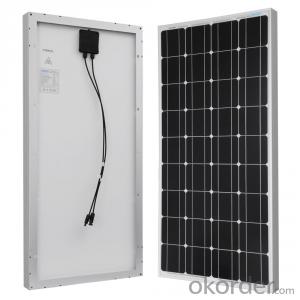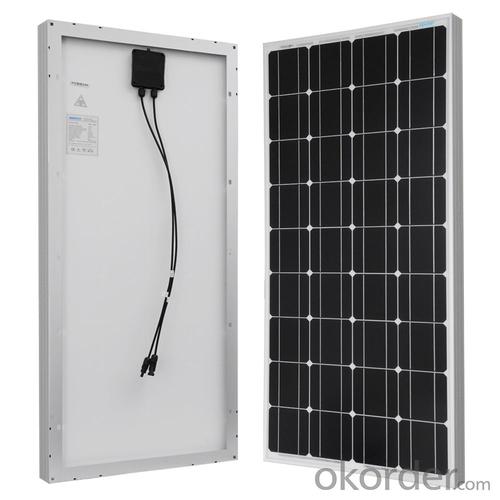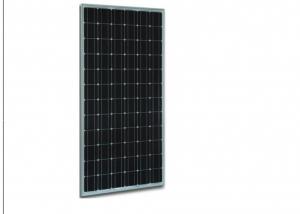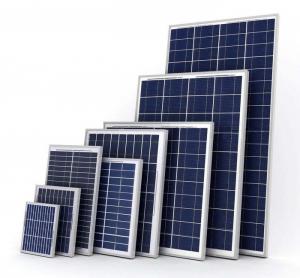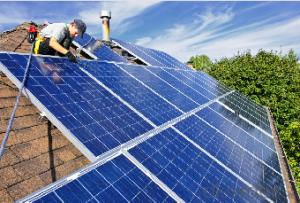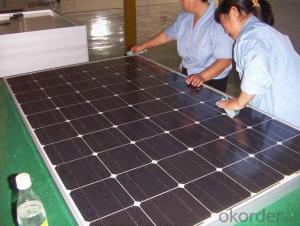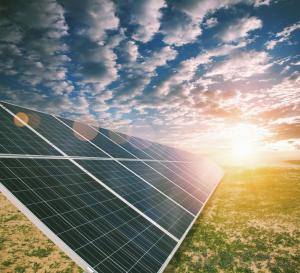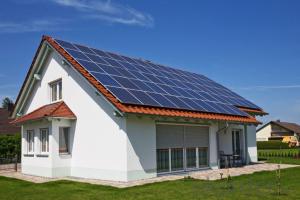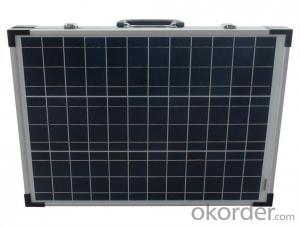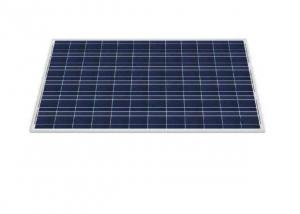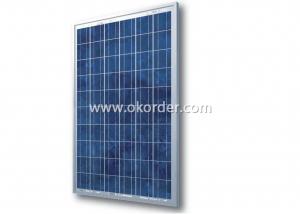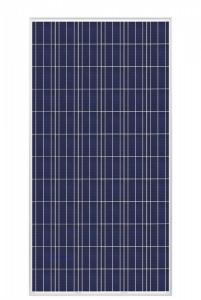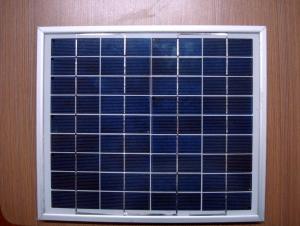330W High Efficiency Poly Solar Module with 100w Output
- Loading Port:
- Tianjin
- Payment Terms:
- TT OR LC
- Min Order Qty:
- 1 watt
- Supply Capability:
- 100000 watt/month
OKorder Service Pledge
OKorder Financial Service
You Might Also Like
Specification
Product Description:
1.Structure of Solar Module Description
CNBM Solar's photovoltaic module is designed for designed for large electrical power requirement. It is the optimal choice for both on-grid and off-grid power systems. CNBM Solar offers high performance of power per square foot of solar array.
2.Main Features of the Solar Module
Solar Cell: High efficency crystalline solar cell. Even if under the weak light, the solar module can produce maximum power output.
Tempered glass: Anti-reflecting coating and high transmission rate glass increase the power output and mechanical strength of solar module.
EVA and TPT: Using high quality EVA and TPT to prevent destroying and water.
Strong aluminum frames to strengthen the load hold and to stand against high wind.
Junction box: Multi function junction box with water proof.
Long lifetime: ≥25 years; Less power decrease.
Good performance of preventing from atrocious weather such as wind and hails.
Resisting moisture and etching effectively, not effected by geology.
The certificate issued by international authority: UL, TUV, IEC, VDE, CE.
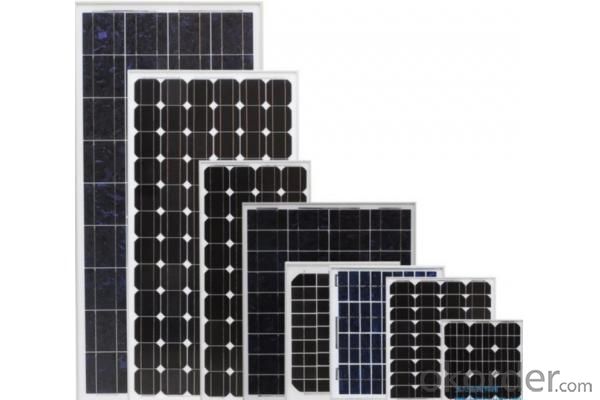
Solar panel working process
In addition to being the ultimate source of all life on earth, the sun is an infinitely renewable, completely pollution-free source of electricity. Instead of burning fossil fuels dug up from the ground in a big power plant – a very 19th century, industrial age approach, when you think about it – solar panels convert sunlight directly into electricity, with no harmful emissions.
The basic unit of a solar panel is a solar cell, which usually consists of one or two layers of silicon-based semiconductor wafers. When struck by the photons in sunlight, the solar cell generates an electrical charge due to the "photovoltaic effect" – which is a pretty good name, since it produces voltage from photons. The flow of these electrons moves in a steady electrical current from one side of the cell to the other.
Dozens of these PV cells are packaged together into solar modules, which in turn are packaged into solar panels that are mounted on a rooftop and arranged to maximize their hours of exposure to direct sunlight. Because the electricity generated by all those solar cells is direct current (DC), it is then sent to an inverter that transforms the power into the same alternating current (AC) used by the appliances in your home and the local utility electricity distribution grid. Increasingly, these inverters are getting "smart," providing data monitoring for solar installation performance and other grid integration services.
- Q: I am writing a lab for school and I need to know who invented solar panels? Any help would be great.
- Google would like to be your friend - Try - who invented solar panels and see what turns up.
- Q: Can solar panels be installed in urban areas with limited space?
- Yes, solar panels can be installed in urban areas with limited space. There are various options available such as rooftop solar panels, building-integrated photovoltaics, and solar canopies that can be used to maximize the utilization of available space in urban areas. Additionally, advancements in solar technology have led to the development of more compact and efficient solar panels, making it easier to install them in limited spaces.
- Q: Can solar panels be used in areas with high levels of electromagnetic radiation?
- Yes, solar panels can be used in areas with high levels of electromagnetic radiation. However, it is important to ensure that the panels are properly shielded and grounded to minimize any potential interference or damage caused by the electromagnetic radiation.
- Q: Can solar panels be used in areas with high levels of snowfall?
- Yes, solar panels can be used in areas with high levels of snowfall. However, the performance and efficiency of the panels may be affected during snowy conditions. Regular snow removal or tilted mounting angles can help maximize their effectiveness in such areas.
- Q: Are solar panels suitable for residential use?
- Yes, solar panels are highly suitable for residential use. They are cost-effective, environmentally friendly, and can significantly reduce electricity bills. With advancements in technology and decreasing panel prices, solar panels have become an attractive option for homeowners to generate clean, renewable energy and contribute to a sustainable future.
- Q: I want to also know if the 0 watt rating on the solar panel is 0 watts per day or is it constantly adding 0 watts? Is there a time which the 0 watts is being added like 0 watts per second or 0 watts per minute and so on?
- 0 Watt Solar Panel
- Q: So I'm trying to figure out what to ask for my birthday because its one of the few times I can get stuff for no reason, like stuff I don't normally go to the store to buy. (i dont go to the store to get much at all anyway).Anyway, I'm interested in solar panels and led and electronics and i was wondering if there is anything not over expensive that would be cool. Some things I'm interested in:solar, wind, water energyGadgets (multitools, swiss army knives)Vibram fivefingersdrawingmaking stuff (duct tape wallets, stuff out of altoids containers)basically technology and outdoors-gear stuffoh and im 6 turnin 7 male.
- solar panel is expensive, but small solar panel is not expensive, for example, 5w solar panel, solar light also not expensive led light also not expensive. i am not sure about other stuff that you said
- Q: Can solar panels be installed on tall buildings?
- Yes, solar panels can be installed on tall buildings. In fact, tall buildings are often ideal for solar panel installations as they typically have more available roof space to accommodate a larger number of panels. Additionally, being elevated, tall buildings are less likely to be obstructed by shading from surrounding structures or trees, maximizing their exposure to sunlight and optimizing energy generation.
- Q: Mitsubishi Solar Panels For Home Installation: How Much Do The Panels Cost?
- Mitsubishi solar panels are sold in pairs. I was in the market this week, checking on solar panels to install in my own house / workshop. Here's the price list I got from online and wholesale dealers for a pair of Mitsubishi panels: * Model MF20EC4 (20 watts) -- $590 * Model MF25UE5N (25 watts) -- $60 * Model MF75MF5 (75 watts) -- $799 * Model MF80UD4 (80 watts) -- $820 * Model MF85UD5 (85 watts) -- $850 BP Solar, PowerUp Solar GE Solar too have their own panels with a low-to-high price range. Go for BP solar panels as they're more affordable for home installation and good value for money.
- Q: I'm very interested in how solar panels work. I understand the bigger picture of how it can be used for solar heating or as a generator, but I'm lost at the smaller details. Things like: - Could my computer work on solar? It has a 900 watt power supply (this is excluding monitor/speakers) - if a panel is for example, a 60 watt panel, does this mean it will pump 60 watts a second into a battery? - Does solar heating make the water electrified?
- There's okorder /
Send your message to us
330W High Efficiency Poly Solar Module with 100w Output
- Loading Port:
- Tianjin
- Payment Terms:
- TT OR LC
- Min Order Qty:
- 1 watt
- Supply Capability:
- 100000 watt/month
OKorder Service Pledge
OKorder Financial Service
Similar products
Hot products
Hot Searches
Related keywords
